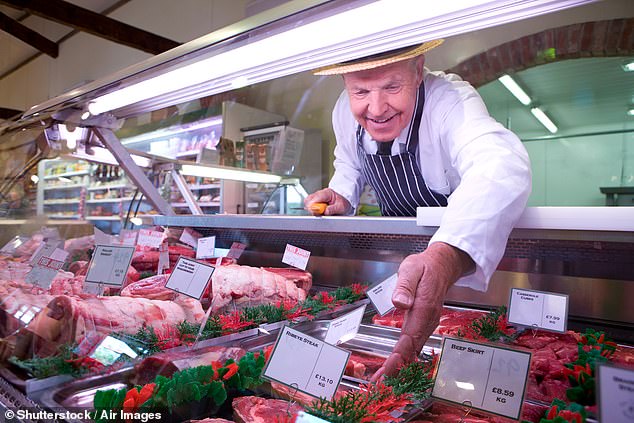- UK food inflation pace falls to lowest annual rate since November 2021
- The price of vegetables, hot drinks and soft drinks is increasing progressively, according to the ONS
The pace of food inflation in the UK fell in March to the lowest annual rate since November 2021, official figures from the Office for National Statistics show.
Prices of household favorites such as meat, buns, bread, cereals and chocolate chip cookies fell last month, helping to reduce inflation to its lowest level in two and a half years. .
But the cost of vegetables, hot drinks and soft drinks continued to rise last month.
Separate data released by the Energy and Climate Intelligence Unit on Wednesday also claimed that cooking oil prices look set to hit record highs.
Overall, prices of food and non-alcoholic drinks rose 4 percent in the year to March, up from 5 percent in the year to February, the ONS said.
Rising food inflation has increased pressure on millions of households facing higher bills at the checkout.
ONS data showed the rate at which consumer prices have been rising fell to 3.2 per cent in the year to March, down from 3.4 per cent the previous month.
The slowing pace of food inflation played the biggest role in helping to reduce UK headline inflation last month, the ONS said.
The food inflation growth rate declined for the 12th consecutive month from a peak of 19.2 percent in March 2023, the highest annual rate seen in more than 45 years.
Between February and March, prices of food and non-alcoholic beverages rose 0.2 percent, compared to an increase of 1.1 percent in the same monthly period a year earlier.
Meat matters: Meat prices fell last month, new ONS data reveals

Delicious: The price of buns fell slightly last month, according to the ONS
The ONS said: “Prices have been relatively high but stable since early summer 2023, increasing by less than 2 per cent between May 2023 and March 2024.
“This compares with a sharp increase of around 22 percent seen between March 2022 and May 2023.”
Bread and cereal prices rose 0.2 percent month-on-month, compared with a 2.2 percent increase a year ago, resulting in an annual rate in March of 4 percent, the lowest since January of 2022.
The ONS said prices for some bakery products, such as chocolate biscuits and scones, fell between February and March 2024, but rose between the same period a year earlier.
Meat prices fell 0.5 percent between February and March this year, compared with a 1.4 percent increase a year ago.
This resulted in an annual rate of 3.1 percent in the year to March, representing the lowest rate since November 2021.
The main downward effect behind the decline in meat inflation came from pork products, the ONS added.
The annual rate decreased in eight of the 11 classes of foods and non-alcoholic beverages analyzed, with the exception of vegetables, hot drinks and soft drinks.
But here’s why cooking oil is rising…
Separate data released by the ECIU on Wednesday stated that oil prices appear on track to hit record highs.
According to the ECIU, UK rapeseed production, which is used for domestic and commercial vegetable cooking oil, is forecast to be up to 38 per cent lower this year compared to 2023, following “extreme” wet weather in winter and early 2023. spring hit the crops.
Compared to the average performance since 2015, the reduction could be up to 54 percent, the ECIU suggests.
Tom Lancaster, land analyst at ECIU, said: ‘We are seeing a double whammy in cooking oil.
‘Whether it’s Spanish olive oil or British vegetable oil, climate extremes are damaging crops and consumers are paying for it at the supermarket checkout.
“Climate change has added £361 to food bills in recent years and the failure of the British rapeseed oil crop could lead to a rise in vegetable oil prices.”



